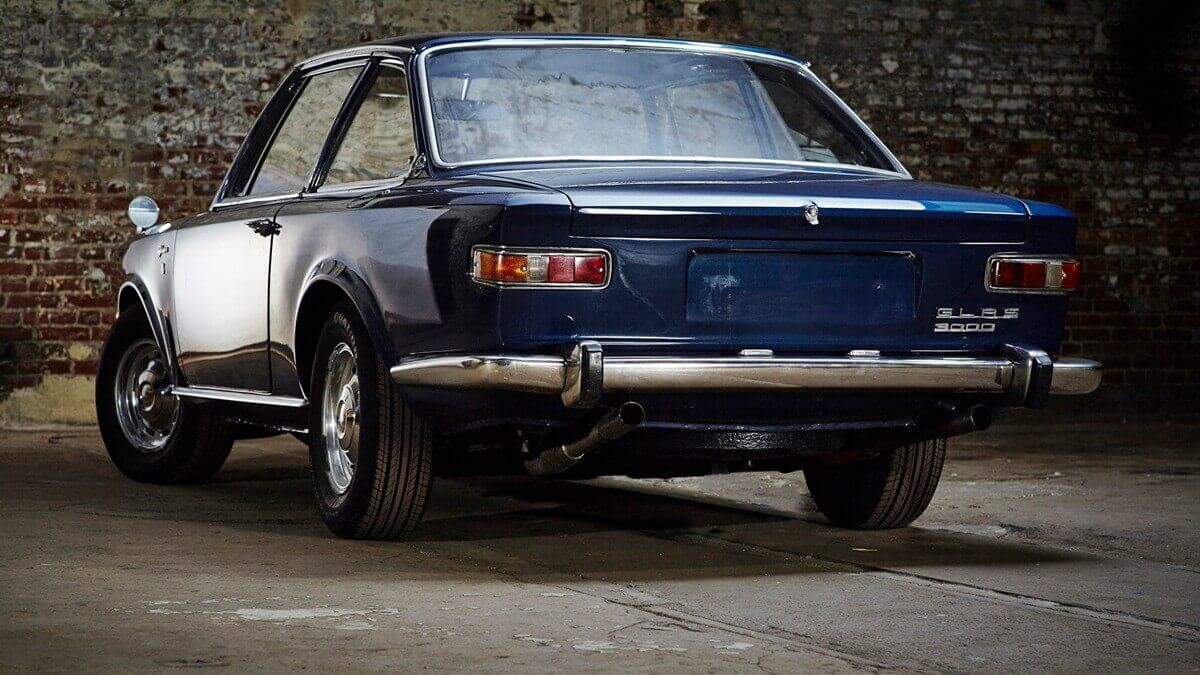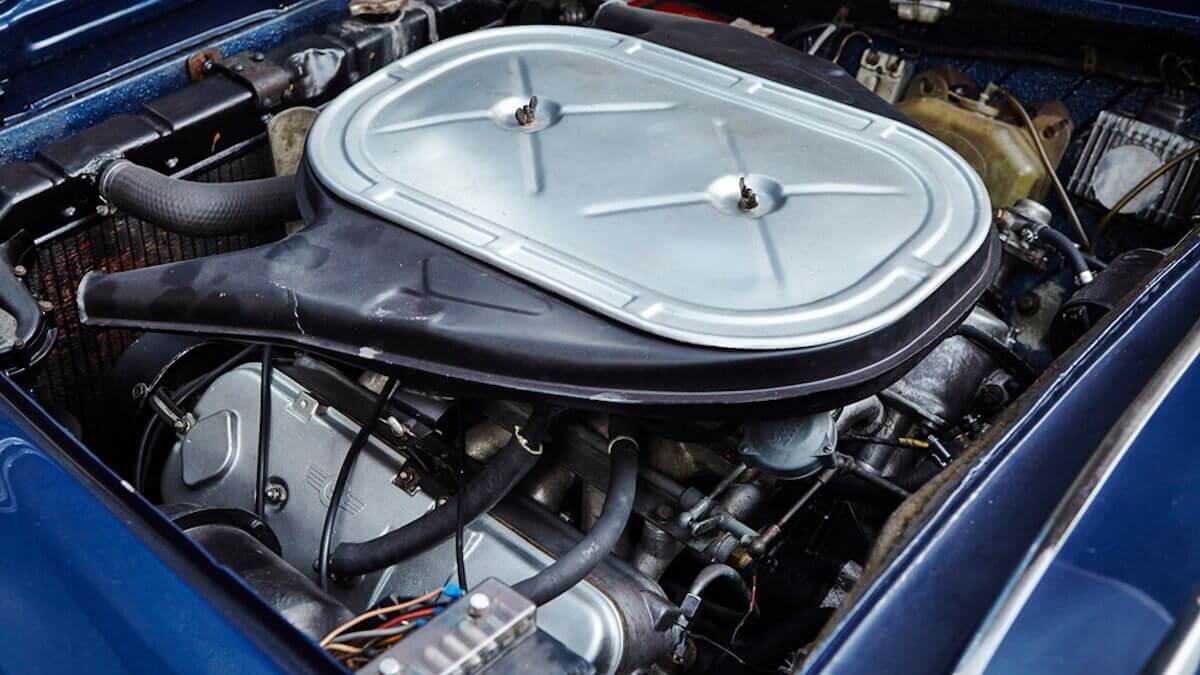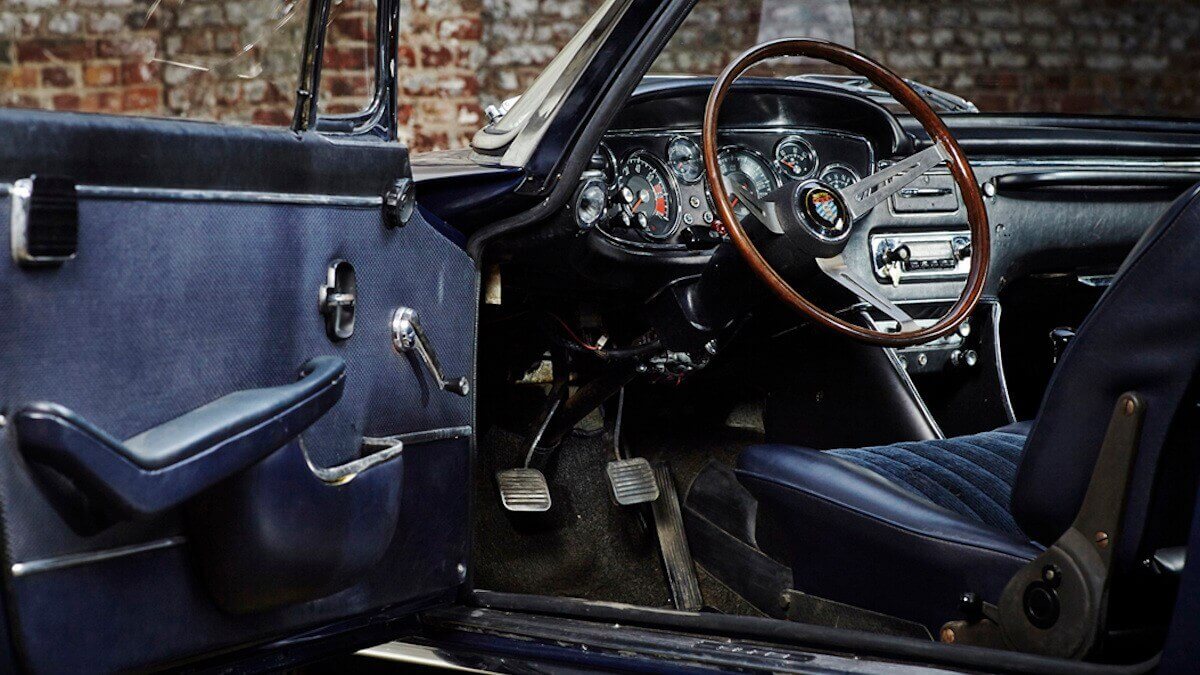Glas V8
Today only a few fans know about the car company Hans Glas GmbH from Dingolfing, Germany. Originally this family business started in 1883 with the production of agricultural machinery. After World War 2, it was quickly recognised by them that the German population would need new means of transport. Comparable to the Vespa boom in Italy, Glas foresaw a high demand for scooters and under junior boss Andreas Glas they developed a corresponding vehicle with an ILO engine, which was sold from 1951. A grandson of the company boss Hans Glas had the nickname ‘Gogg’ and thus ensured the naming for the new scooter, which quickly became the market leader in Germany: the ‘Goggo-Roller’. It was followed by larger engine variants as well as load scooters and sidecar versions. The agricultural machiners business continued in parallel under the name Isaria.
Just one year after the presentation of the Goggo-Roller, preliminary work on the first Glas car began. This appeared in 1955 under the label of the newly founded subsidiary brand Goggomobil. The very small car with a maximum of 20 hp was later also available as a Coupé and as a small van. In the Federal Republic of Germany, as in many other European countries, prosperity returned relatively quickly, which led to the desire for bigger cars. Glas reacted in 1958 with a larger Goggomobil called Isar and finally in 1962 with their first four-cylinder model 1004, which later also appeared as 1204 and 1304 with correspondingly larger and more powerful engines. In 1963, the new middle class sedan 1700 made its debut at the IAA (Frankfurt Motor Show) next to the sports coupé 1300 GT and 1700 GT. All of them had been designed by Pietro Frua from Italy. The crowning glory of the model portfolio was the Glas V8, initially with a 2.6-liter engine, which debuted two years later at the same location. This V8 engine had been developed from two 1.3-liter four-cylinder engines from the 1300 GT assembled into one block. Because of its visual similarity to the Maserati Quattroporte, also designed by Frua, the car was popularly nicknamed the ‘Glaserati’.
























The unusually designed cars led to very high production costs. On top of this came the fees for the many new developments within a short period of time. This cost structure couldn’t be financed by the sales figures, as a result of which the Hans Glas GmbH slipped deep into the red. On November 10, 1966, the company was finally taken over by BMW. The Munich-based carmaker had the Glas model range in an upgraded form run off the production lines for a while before production was finally stopped. The Glas 1300 GT and 1700 GT became the BMW 1600 GT including the well-known kidney grille. The large Glas V8 mutated into the BMW Glas 3000 V8 without many optical changes and the 1704 was exported to the BMW plant in South Africa including all production facilities. There it rolled off the production line with a slight facelift and right-hand drive as the BMW 1804 and 2004.
But let us move back to the Glas V8. Originally it was planned to present the new top model with a specially developed six-cylinder engine. However, it was soon realized that this would incur high development costs and it would be cheaper to use identical parts from the 1.3-liter four-cylinder engine. Initially 110 kW/150 hp were available to accelerate the four-seater coupé to a topspeed of up to 195 kph (121 mph). The original aim was to achieve at least 200 kph (124 mph), which is why prototypes with more displacement went into testing from the beginning of 1966. As a result of the BMW takeover, the planned top version with 3.2 liters was ultimately dropped, but in September 1967 the 160 hp BMW Glas 3000 V8 replaced the previous Glas 2600 V8. Officially, the smaller engine was offered in parallel, but only a few customers ordered it. The coupé body designed by Frua took over various add-on parts from existing vehicles of other manufacturers without showing this too clearly. The windscreen wipers, the window cranks and the headlamps, for example, came from the parts shelfs of Mercedes-Benz. No wonder that BMW wanted to stop production as soon as possible. 300 copies of the Glas 2600 V8 were produced, followed by another 418 units of the BMW Glas 3000 V8. Coys of Kensington is auctioning off a well-preserved vehicle next week at the InterClassics Maastricht in the Netherlands. This car had been stored dry for the past 30 years. The hammer price is expected to be between 50,000 and 60,000 €.
Images: Coys of Kensington




